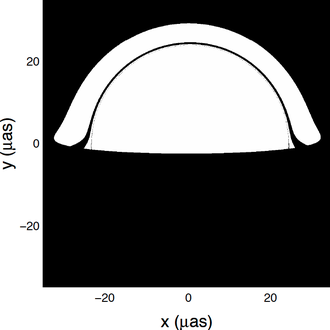
It is very likely that general relativity is not the final description of gravitation. This theory is extremely successful to describe gravity and has been tested so far with great success. However, most of these tests are performed in our Solar system, thus in regions where gravitation is not very strong. If general relativity fails some day, it is very likely that it will fail to describe the most extreme gravitational fields, such as the gravitational field around a black hole.
Chern-Simons gravity consists in modifying general relativity in some technical way that was suggested by string theory, i.e. a theory that tries to merge general relativity and quantum mechanics. This modified theory leads to different behavior of photons and particles, particularly in regions where gravity is strong,such as close to black holes. One can then investigate whether this different behavior of photons and particles may be probed by observing the surroundings of black holes.
The paper cited below partly answers to this question. This work uses an approximation of the full Chern-Simons gravity that allows to describe the modified spacetime in a relatively easy way around a black hole. However, this description is only valid provided the modification to general relativity is not too strong, and theblack hole is not rotating too fast. The first condition is likely to be valid as all observations so far are perfectly consistent with general relativity, so it would be unlikely that gravitation would be described by a very different theory. On the other hand, the second hypothesis is a big restriction: only slowly-rotating black holes are taken into account in the analysis.
By simulating observations of various electromagnetic phenomena close to black holes in general relativity and in Chern-Simons modified gravity, the author shows that the observable difference between the twotheories is only of a fraction of percent, which is far too low to be detected by current and even near-future instruments. The conclusion is that solutions representing rapidly-rotating black holes in Chern-Simons gravity should be developed in order to determine if a bigger observational difference would be at hand when the black hole rotates fast.
More details in: Vincent F. H., "Testing Chern-Simons gravity with black holes?
The picture: Superimposition of the image of the innermost parts of an accretion disk surrounding a black hole in general relativity and in Chern-Simons gravity. The two images are indistinguishable, the difference being less than 0.01 µas (1 µasbeing an angle of approximately one billionth of a degree).






